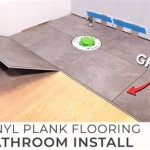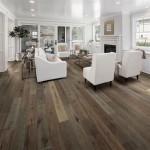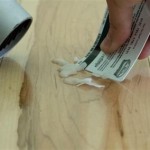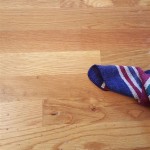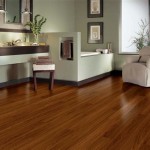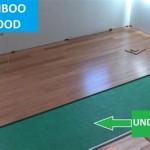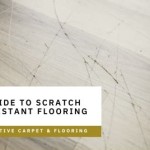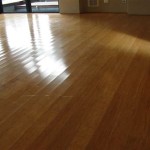What Is The Most Scratch Resistant Flooring To Buy In Singapore?
Choosing the right flooring for a home or business in Singapore requires careful consideration of several factors, including aesthetics, cost, maintenance, and, crucially, scratch resistance. Singapore's humid climate combined with daily wear and tear necessitate a flooring option that can withstand the pressures of a busy environment. Scratches not only detract from the appearance of a floor but also can compromise its structural integrity over time. This article will delve into the characteristics of various flooring materials to determine which options offer the best scratch resistance for properties in Singapore.
The level of scratch resistance needed often depends on the specific application. A household with small children and pets will require a more durable flooring solution than, for example, a rarely used guest room. Similarly, commercial spaces with high foot traffic will experience more wear and tear than a small office. Understanding these requirements is the first step in selecting the most appropriate flooring.
Understanding Scratch Resistance Ratings
When evaluating flooring materials, it's important to understand how scratch resistance is measured. Several testing methods exist, but the most common is the Taber Abrasion Test. This test involves subjecting a flooring sample to abrasion from rotating abrasive wheels under a specific load. The number of cycles before significant wear is observed is recorded, providing a relative index of abrasion resistance. Higher cycle counts indicate better durability. While the Taber test is widely used, it's important to note that it's just one measure of performance and should be considered alongside other factors like impact resistance and overall material composition.
Another factor influencing scratch resistance is the material's surface finish. Some finishes are designed to be more durable than others, and specialized coatings can further enhance a floor's resistance to scratches. Understanding the specifics of a flooring's finish is crucial for assessing its long-term performance.
However, be careful to not solely rely on marketing claims. Always request for the actual tested rating from the manufacturer or supplier. These reports should be available for any type of flooring that is sold.
Top Flooring Options for Scratch Resistance in Singapore
Several flooring options available in Singapore stand out for their superior scratch resistance. Each has unique characteristics and benefits. Here's a detailed look at some of the leading candidates:
1. Porcelain Tile:
Porcelain tile is a highly durable material known for its exceptional scratch resistance. It's made from a denser clay than ceramic tile and fired at higher temperatures, making it incredibly hard and less porous. This density and hardness make porcelain tile significantly more resistant to scratches from daily use, including pet claws, furniture movement, and dropped objects. Furthermore, porcelain tiles can come in a variety of designs and patterns that mimic natural stones like marble and granite, which can be costly and require maintenance. The cost for installing porcelain tiles are also generally more affordable making it a popular choice.Porcelain tile is rated using the Porcelain Enamel Institute (PEI) scale, which ranges from 1 to 5. A PEI rating of 3 or higher is generally recommended for residential use, while a rating of 4 or 5 is suitable for high-traffic commercial areas. For optimal scratch resistance, choose porcelain tiles with a PEI rating of 4 or 5. Ensure that the installation is done properly to avoid cracking the tiles.
2. Luxury Vinyl Tile (LVT)/Luxury Vinyl Plank (LVP):
LVT and LVP flooring are engineered products designed to mimic the look of natural materials like wood and stone. A key feature of LVT/LVP is its wear layer, a transparent protective coating applied to the surface. The thickness of the wear layer directly correlates with scratch resistance - the thicker the wear layer, the better the protection. LVT/LVP with a wear layer of 20 mils (0.5 mm) or higher provides excellent scratch resistance for residential applications, while commercial spaces should opt for a wear layer of 30 mils (0.76 mm) or more.LVT/LVP flooring is known for its waterproof properties, which makes it a good choice for kitchens and toilets. It is also popular because of its ease of installation and ease of replacement. The relatively cushioned surface also makes it a more comfortable choice for those with young kids or elderly in the house.
3. Laminate Flooring:
Laminate flooring consists of several layers, including a core board (usually made of high-density fiberboard or HDF), a decorative layer (simulating wood or stone), and a wear layer on top. The quality of the wear layer is paramount in determining scratch resistance. Laminate flooring is rated using the Abrasion Class (AC) rating system, which ranges from AC1 to AC5. AC1 and AC2 are suitable for light residential use, while AC3 is recommended for general residential use. For homes with pets or high foot traffic, AC4 or AC5 laminate flooring offers the best scratch resistance. It's critical to choose laminate flooring with an AC rating appropriate for the intended use to ensure long-term durability. Laminate flooring is another popular choice because of its easy installation and easy replacement features.However, unlike LVT/LVP, laminate flooring is not waterproof and swells if it comes into contact with water. This makes it a less suitable choice for Singapore where flash floods can sometimes occur.
4. Epoxy Flooring:
Epoxy flooring is a durable, seamless surface created by applying multiple layers of epoxy resin to a concrete substrate. It offers excellent scratch resistance and is commonly used in industrial and commercial settings due to its ability to withstand heavy traffic and impacts. While less common in residential applications, epoxy flooring can provide a highly durable and low-maintenance option for homes, especially in areas prone to heavy use. Epoxy floors are also resistant to chemicals, making it a practical choice in kitchens and other areas where spills are common. Epoxy comes in a wide variety of colors and decorative flakes can be added to customize the colour. However, epoxy floors are typically considered pricier than the other flooring options mentioned above.The scratch resistance of epoxy flooring is determined by the quality and thickness of the epoxy resin and the application process. A properly installed epoxy floor with a high-quality resin will withstand scratches and abrasions for many years.
Factors Affecting Scratch Resistance Beyond the Flooring Material
While the type of flooring material is a primary determinant of scratch resistance, several other factors can influence a floor's susceptibility to scratches. It is important to consider these when making a flooring choice and maintaining the floor effectively.
1. Subfloor Preparation:
A properly prepared subfloor is essential for the long-term performance of any flooring. An uneven or unstable subfloor can cause the flooring to flex and move, increasing the risk of scratches and cracks. Before installing any flooring, ensure that the subfloor is level, clean, and dry. This may involve leveling the subfloor with self-leveling compound or repairing any cracks or imperfections. A stable subfloor provides a solid foundation for the flooring, helping to prevent scratches and other types of damage.2. Installation Quality:
Even the most scratch-resistant flooring materials can be susceptible to damage if installed improperly. Poor installation can lead to gaps, uneven surfaces, and loose tiles or planks, all of which can increase the risk of scratches. Hire a qualified and experienced flooring installer to ensure that the flooring is installed correctly. Proper installation not only enhances the appearance of the floor but also contributes to its long-term durability and scratch resistance.3. Regular Maintenance:
Regular cleaning and maintenance are essential for preserving the scratch resistance of any flooring. Dirt, dust, and grit can act as abrasives, causing scratches over time. Sweep or vacuum the floor regularly to remove these particles. Use a damp mop with a mild detergent to clean the floor as needed. Avoid using harsh chemicals or abrasive cleaners, as these can damage the surface finish and reduce scratch resistance. Consider using floor mats or rugs in high-traffic areas to protect the flooring from scratches and wear. For example, placing entrance mats at the entrance of the house helps to trap abrasive particles before they enter and cause scratches in the house.4. Furniture Protection:
Furniture legs can cause scratches and dents on flooring, especially when moved across the surface. Protect the flooring by using felt pads or furniture glides on the legs of chairs, tables, and other furniture. These pads provide a barrier between the furniture and the floor, preventing scratches and making it easier to move furniture without causing damage. Regularly check and replace worn-out felt pads to maintain their effectiveness.5. Pet Care:
Pets, particularly dogs, can cause scratches on flooring with their claws. Keep pets' nails trimmed to minimize the risk of scratches. Consider using area rugs or mats in areas where pets spend a lot of time. Alternatively, if you know you will have pets, the flooring should be chosen with this in mind, perhaps picking a darker colour to hide any scratches that may occur.Considering Budget and Long-Term Cost
When choosing scratch-resistant flooring, it's important to consider not only the initial cost of the material but also the long-term cost of maintenance and replacement. While some flooring options may have a higher upfront cost, their superior durability and scratch resistance can result in lower maintenance and replacement costs over time.
For example, porcelain tile and epoxy flooring are often more expensive to install than laminate or LVT/LVP flooring. However, their exceptional scratch resistance and long lifespan can make them a more cost-effective choice in the long run, especially in high-traffic areas. Conversely, while laminate and LVT/LVP flooring may be more affordable initially, they may require more frequent replacement if they are not properly maintained or if they are subjected to heavy use. It is crucial to weigh the upfront cost against the expected lifespan and maintenance requirements of each flooring option to determine the most cost-effective choice for your specific needs and budget.
Additionally, consider the cost of professional installation. Some flooring materials, such as porcelain tile and epoxy flooring, require specialized installation techniques and should be installed by a qualified professional. DIY installation may be possible for some types of flooring, but it's important to have the necessary skills and tools to ensure a proper installation. Improper installation can void warranties and lead to premature damage and scratches.

The Most Durable Homes And Flooring Floor Gallery

What Is The Most Durable Type Of Flooring Singapore

6 Most Popular Flooring Types In Singapore Vinyl Marble Laminate Which Is The Best

Herf Flooring Completely 100 Waterproof Laminate Sg

9 Best Vinyl Flooring In Singapore 2025 The Singaporean

Top Pet Friendly Flooring In Singapore

Best Vinyl Flooring In Singapore Floor Supplier Contractor

How To Choose Laminate Flooring Thickness Singapore

What Is The Most Durable Type Of Flooring Painting Contractor

Vinyl Flooring Singapore S Floor Co
See Also
